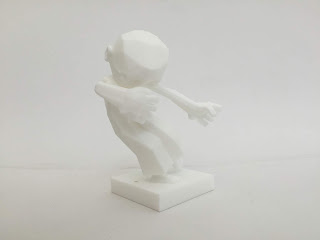We are all too familiar with the impact that the thoughtless use and disposal of plastics can have on our environment – so I thought I would develop a project for schools, to help children become more informed about plastics, become familiar with different types of plastics they encounter on a daily basis, and to start to feel a bit more positive about what they can do to help.
I pitched my idea to Dorset’s Cultural Hub and was delighted to get funding - as well as schools signing up right from the start.
 |
| Image credit: MoDiP |
There is a practical session where children use magnifying glasses to discover clues - namely the tiny, barely visible, markings on plastic packaging that they readily encounter on a daily basis which tell us what type of plastic material the packaging is made from. A second session gets the children playing ISPY to spot objects in MoDiP’s exhibition, which highlight how plastics can be cleverly recycled and up-cycled. The third session lets the children handle the 'evidence', with objects from MoDiP’s handling collection, so they can decide for themselves whether plastics are the innocent or guilty party and how clever plastics can actually be in addressing environmental challenges.
 |
| Image credit: MoDiP |
By the end of the project, 330 children will have had the Eco-plastic Detective sessions delivered either in schools or at MoDiP, and 150 children will have enjoyed the artist-led sessions - creating something both beautiful and useful to continue the ethos of the project.
The project was extremely lucky to have the artistic backing of Martin Brown, illustrator of Horrible Histories, who created Mo the MoDiP girl as a mascot for the project. Mo can be spotted being an Eco-plastic Detective with an oversized magnifying glass, searching for the plastic recycling triangle at the base of a polyethylene terephthalate water bottle.
 |
| Illustration by Martin Brown |
So, the next time you watch Blue Planet and are filled with despair – why not turn detective, find out the facts, and start making more informed choices for a better future.
Julia Pulman, Museum Engagement Officer.
































